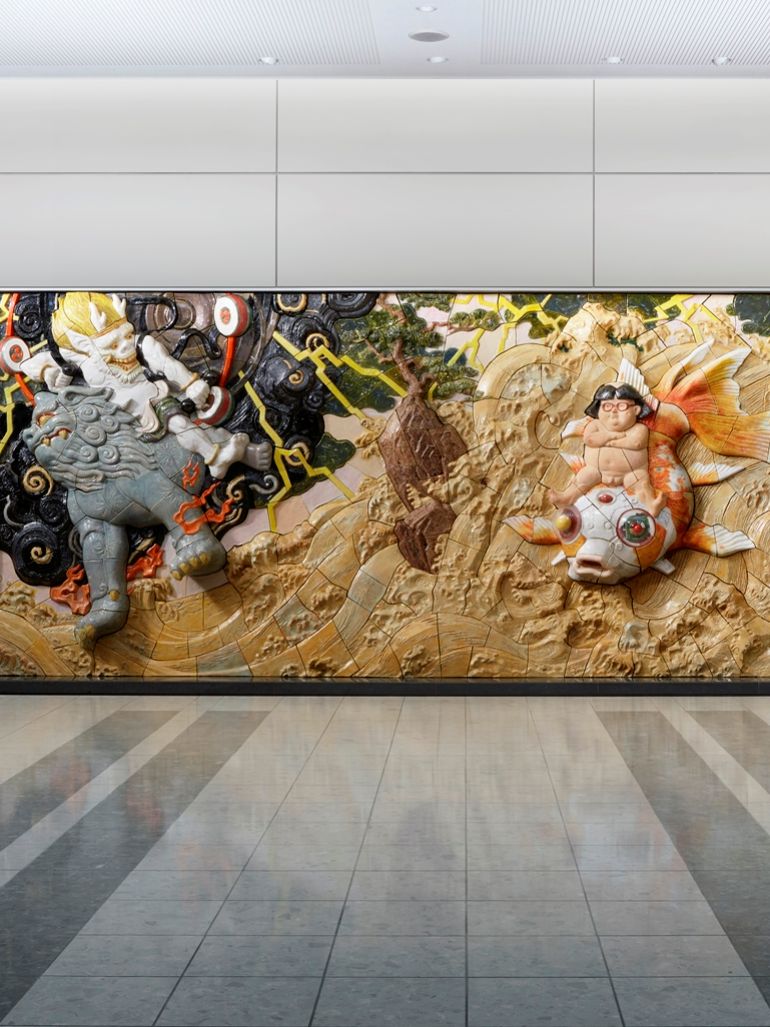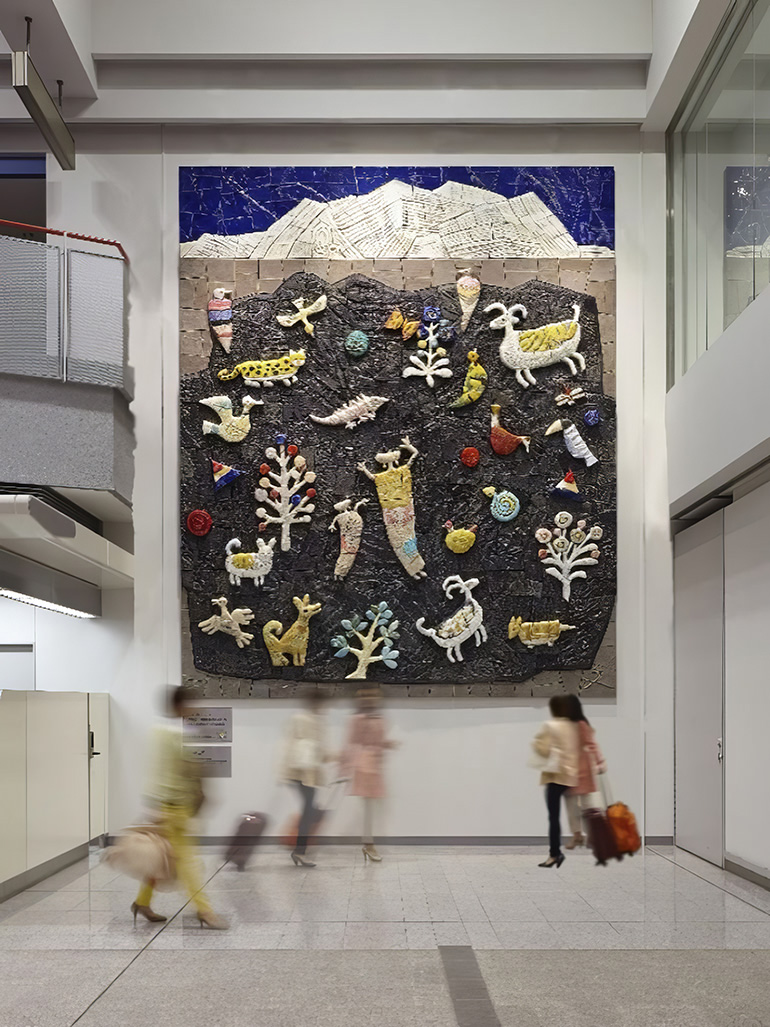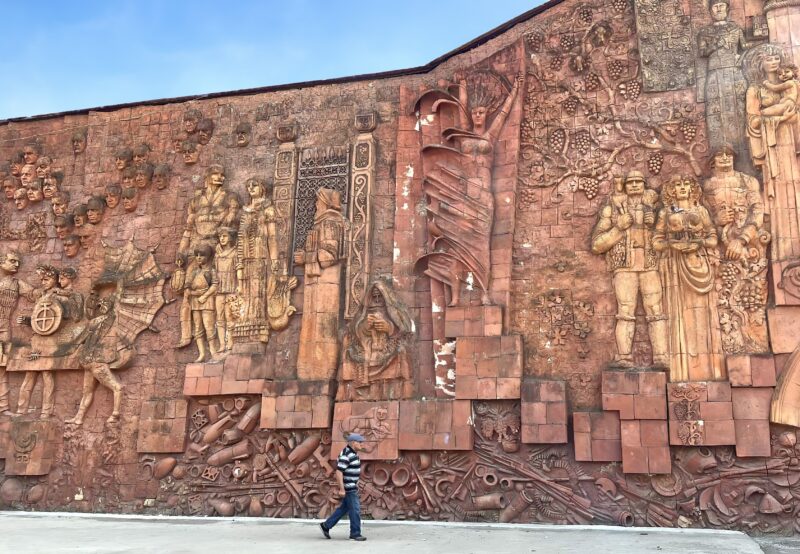
15 Paliashvili street, Kutaisi 4600, Georgia Copy to clipboard
42.271709, 42.700959 Copy to clipboard
Before you go
Nearby attractions: After viewing the bas-relief, explore the Green Bazaar for local produce and crafts. The famous Colchis Fountain, adorned with golden statues, is within walking distance, as are the Galaktioni Statue, Bagrati Cathedral, and the Kutaisi Historical Museum.
Peak times: The market is busiest in the mornings, especially on weekends. For a more relaxed experience, consider visiting in the early afternoon.
Safety: Georgia is a very safe country, but keep personal belongings secure as crowded markets can occasionally attract pickpockets.
Best visit time
Visit Kutaisi for pleasant weather and fewer crowds between mid-April to early July or mid-September to mid-November.
Directions
From Kutaisi city center
Walking: Head south on Tsereteli Street for approximately 500 meters. The Green Bazaar will be on your right.
Public transport: Take bus number 1 or 5 from the city center and alight at the Green Bazaar stop.
From Kutaisi International Airport
Taxi: A taxi ride to the Green Bazaar takes about 20 minutes. Ensure the driver uses the meter or agree on a fare beforehand.
Public transport: Take bus number 30 from the airport to the city center, then transfer to bus number 1 or 5 to reach the Green Bazaar.
Parking
Limited street parking is available around the Green Bazaar. It's advisable to use public transport or taxis due to the area's congestion.
Kutaisi Market Relief (Kolkheti)
The Kolkheti relief, also known as the Kutaisi Market relief, is a striking ceramic 1 panel located at the entrance of the Kutaisi Central Bazaar in the city of Kutaisi 2, Georgia 3. The artwork, created in 1985, is a high-relief that depicts various historical and mythological figures, as well as individuals who have contributed to the development of the city of Kutaisi.
The panel, which measures an impressive 217 square meters, was created by the Georgian artist Bernard (Franz) Nebieridze (1939-1987) and is the largest relief among the countries of the former Soviet Union. The sculptor began working on the relief in 1982 and continued to work on it until his death in 1987.
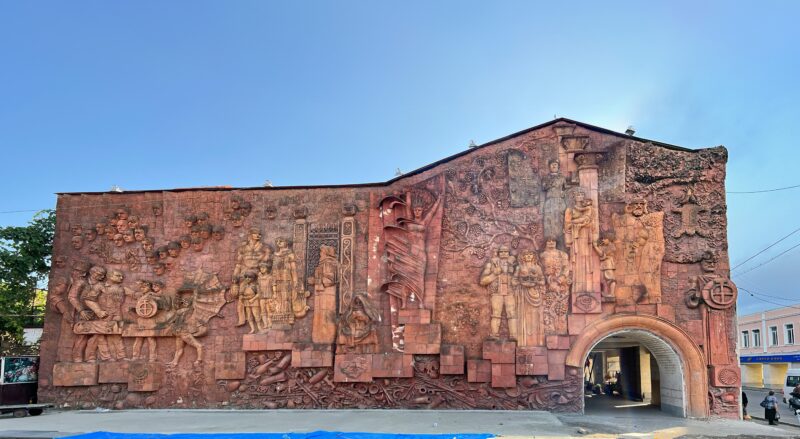
His colleagues Vazha Kutateladze (ვაჟა ქუთათელაძე) and Temur Zhorzholiani (თემურ ჟორჟოლიანი) then completed the work in 1992. The relief was finally put in its place in 1995. It also goes by the name Franz’s Panel or Panorama of Franz after the artist’s nickname.
From Prometheus to the Golden Fleece: Legends of Kutaisi’s Past
Kutaisi is a fascinating city. Situated along the Black Sea coast, it is not only one of the oldest, still inhabited cities, dating back thousands of years to at least the early Bronze Age. According to some historians, it is also the mythological city of Aea or Aia, the ancient capital of a forgotten kingdom called Colchis or Kolkheti, which has faded into obscurity.
You might not have heard about the Kingdom of Colchis, but it plays a vital role in Greek mythology. Some of the famous tales and myths taking place in Colchis include the story of Prometheus, the Titan who stole fire from the gods and gave it to humanity and consequently was chained to a rock in the Caucasus as punishment for his actions.
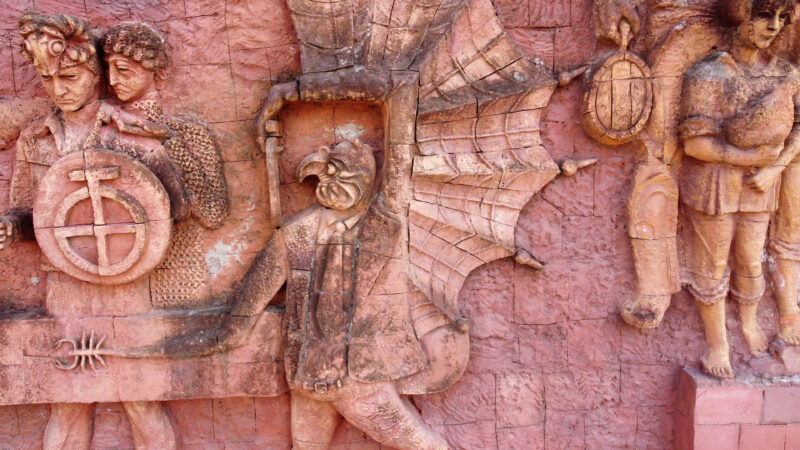
Another famous tale related to Colchis is the one of Heracles and the Apples of the Hesperides. The most well-known, however, is the story of Jason and the Argonauts and their quest for the Golden Fleece. Scenes of it are featured in a large-scale 4 relief in downtown Kutaisi, which pays homage to Colchis by displaying iconic figures and motifs such as Medea, Jason, and the fabled Golden Fleece.
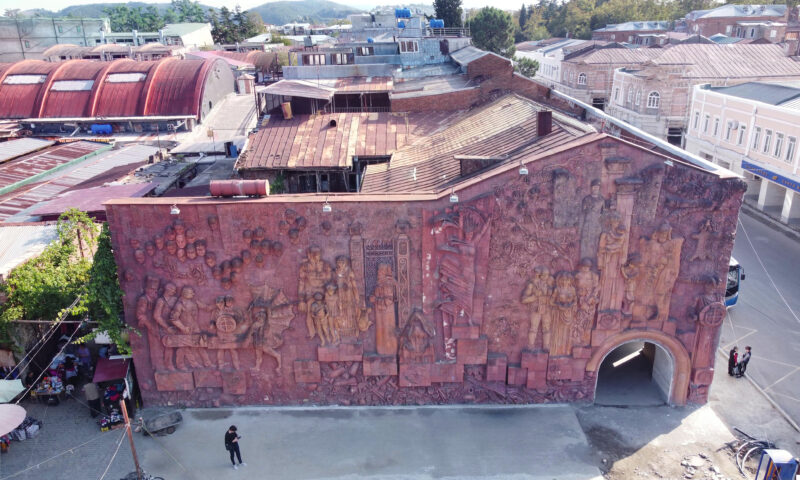
What is shows
The rust-colored Kolkheti relief is a unique and striking piece of art. The composition shows four periods: Georgia BC, Georgia AD, today and the future. It features a variety of figures, including King Aeetes, the character in the myth of Jason and the Argonauts, as well as some from the 20th century.
It also includes events and people who have played a significant role in the development of the city. Some motifs are the monument of Khakhuli, the Georgian family, the war between good and evil, disarmament and others. Also depicted is King David Aghmashenebeli, holding the Gelati Church.
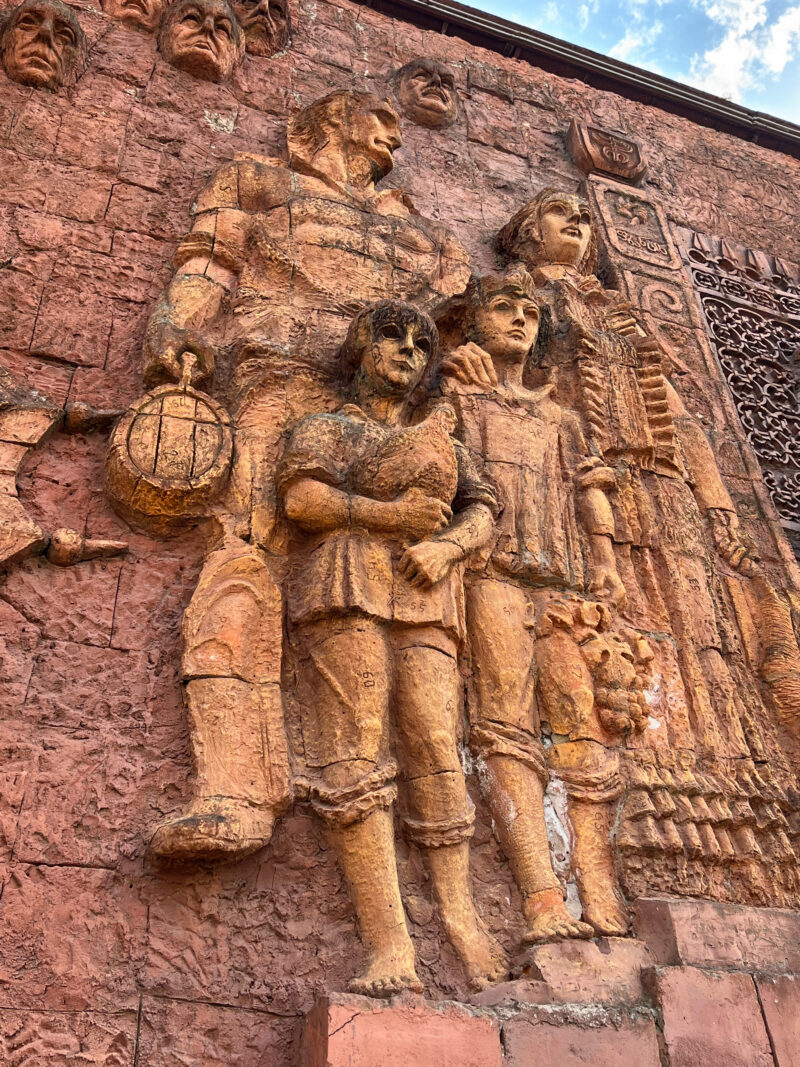
On the right side of the panorama, positioned above the gate, stands King Aeetes, proudly wearing a fur mantle. To his immediate right, the remarkable sheepskin that embodies the Golden Fleece itself is prominently displayed. It’s worth noting that King Aeetes was no ordinary monarch; he was revered as the son of the sun.
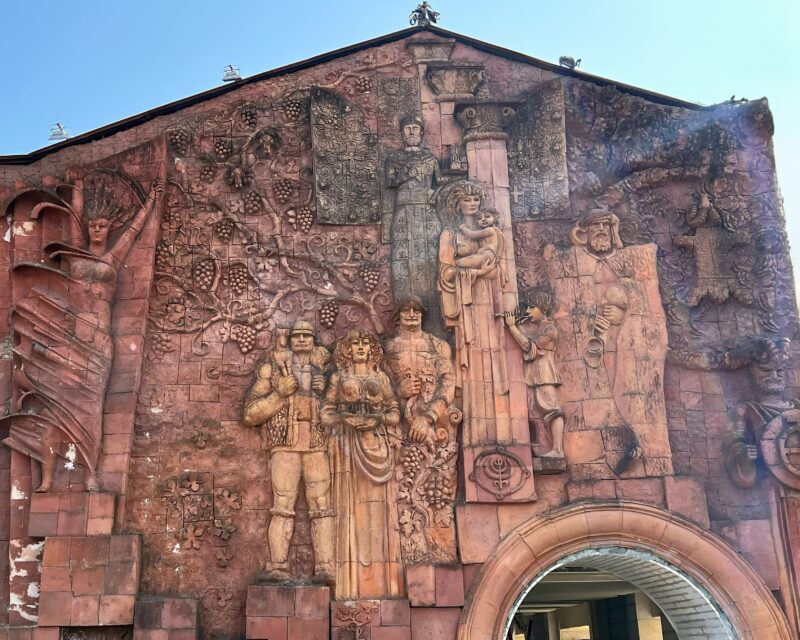
Positioned centrally within the composition is the iconic figure of Mother Georgia, her image imbued with profound symbolism. Notably, an array of weapons and tools appears to be interred in the lower portion of the artwork, adding layers of meaning to her representation. The weapons come from various eras. On the left are ancient weapons, and as you move to the right, you see modern weapons from the 20th century.
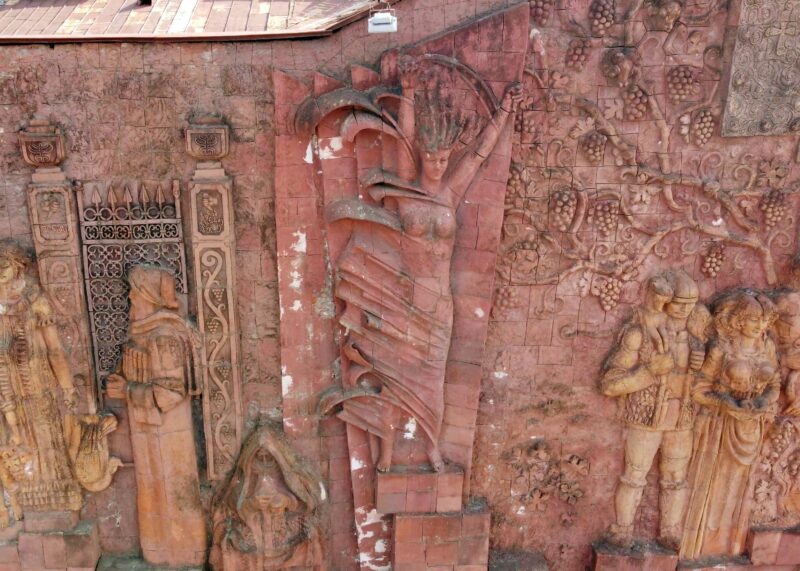
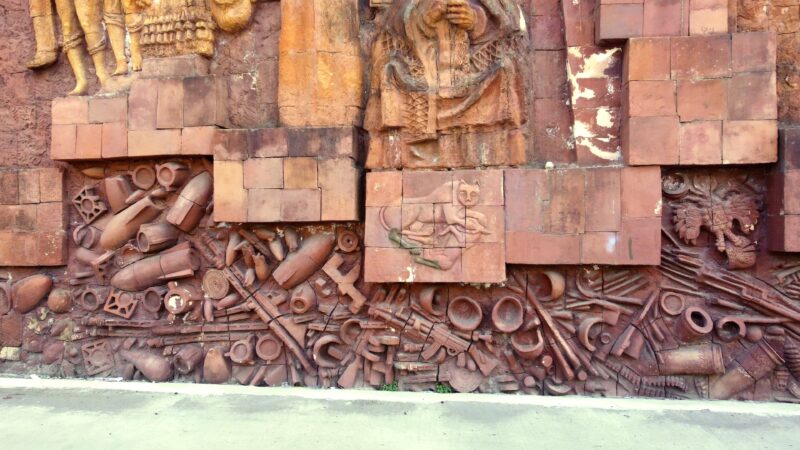
On the left side of the panorama, the faces of various citizens of Kutaisi have been incorporated as models. This inclusion lends a touch of local authenticity to the work, connecting the relief to the community it represents.
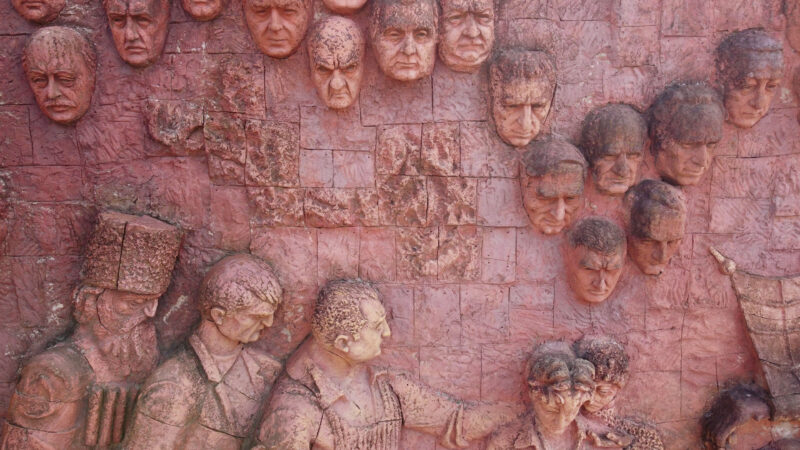
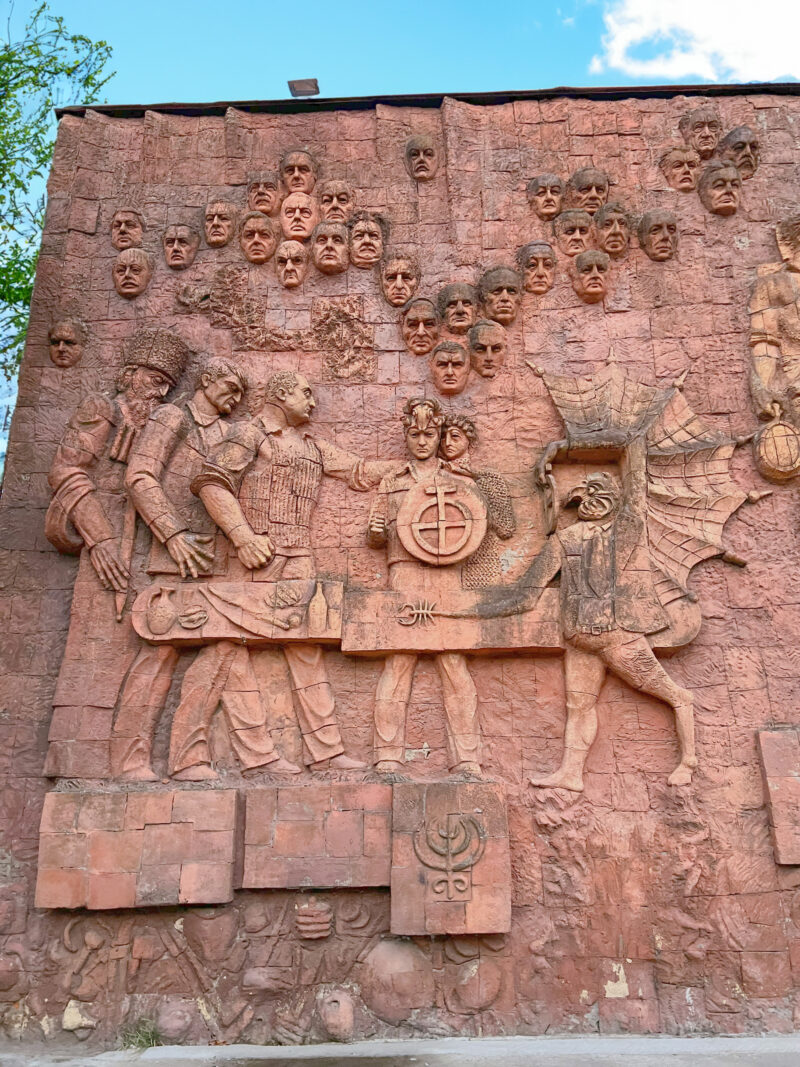
On the left side, a man is dressed in office attire (shirt and tie) but wears the head of a raptor, but hiding this head behind a mask. He holds a scorpion in his hand, has a devilish foot, and is surrounded by a net, seemingly to trap the innocent. This man appears to be an embodiment of evil or perhaps a tool of it. In a socialist context, he might represent the evils of capitalism.
The depth of a high-relief
This artwork is classified as a high-relief, a sculptural technique in which figures or other design elements are carved, molded, or sculpted in such a way that they stand out prominently from the background. In this specific case, most figures are raised by more than 70% of the surface.
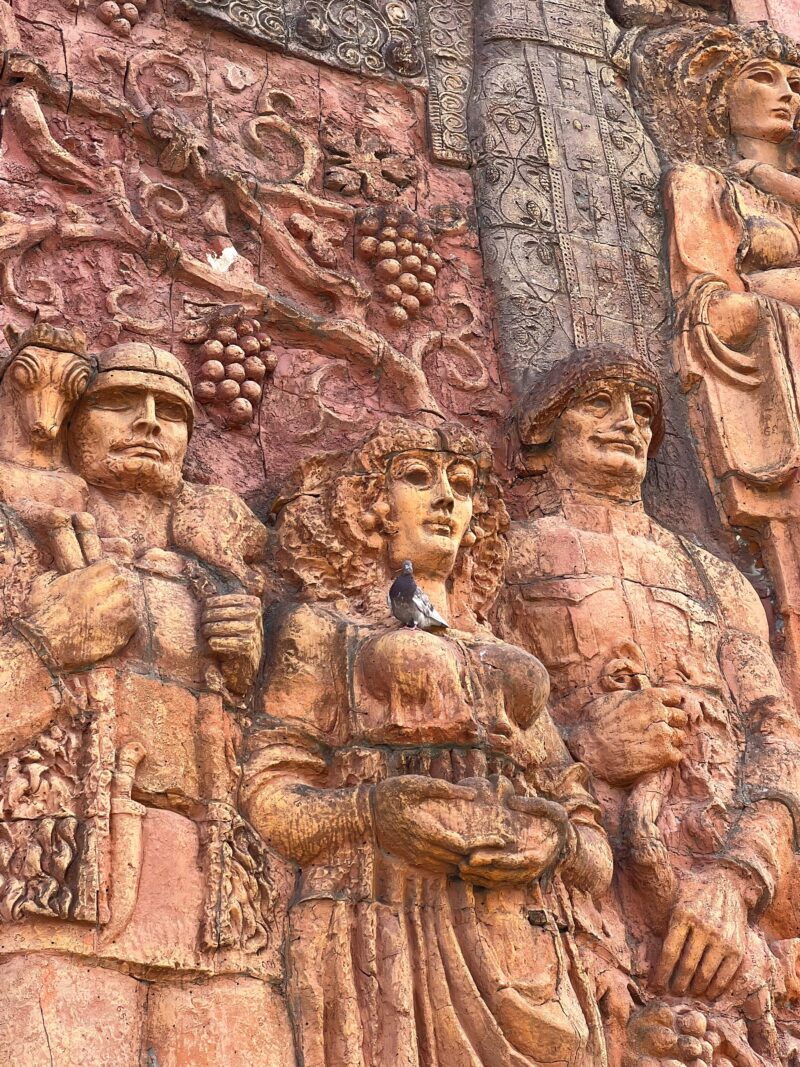
High-reliefs are sculpted deeply enough to cast shadows and are known for creating a three-dimensional effect with significant depth. This allows for a more dramatic and detailed representation of subjects, as the sculptor has more depth to work with. It is commonly used in architectural ornamentation, where the viewer is meant to appreciate the sculptural qualities of the piece from a frontal perspective.
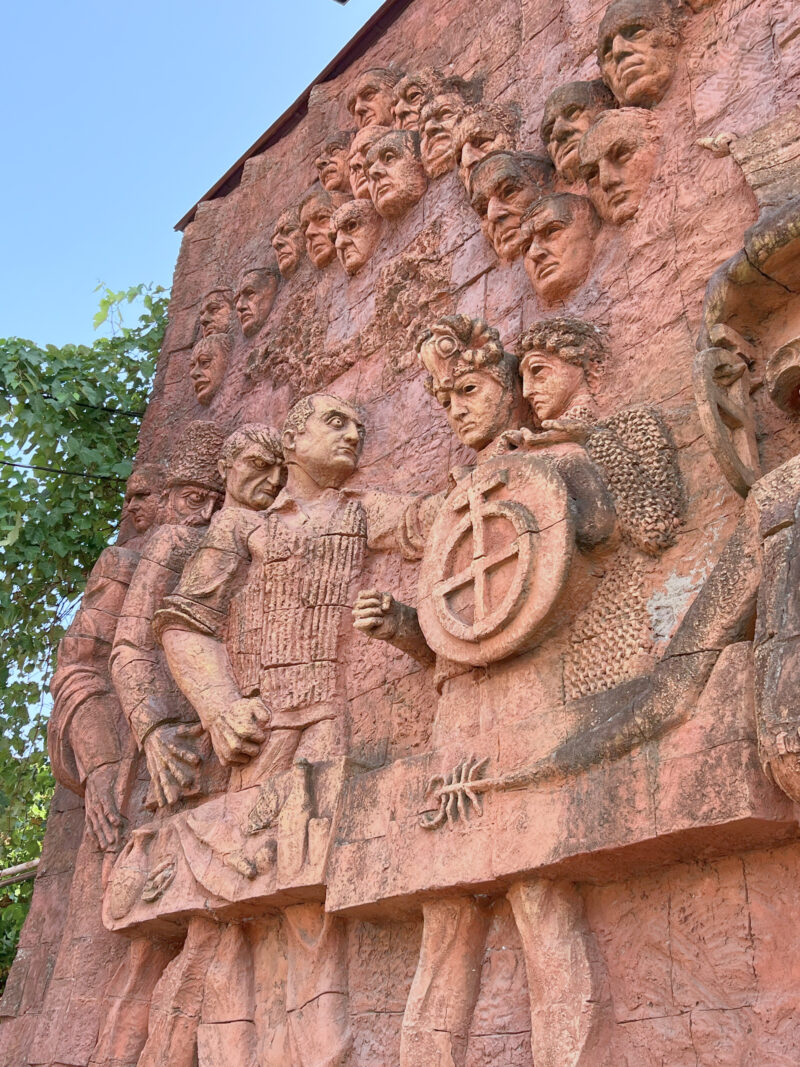
While high-relief sculptures have been less prevalent in the art and architecture of the last 100 years compared to earlier periods, they have not vanished entirely. Their use has evolved to fit the changing aesthetics and preferences of contemporary artists and architects 5.
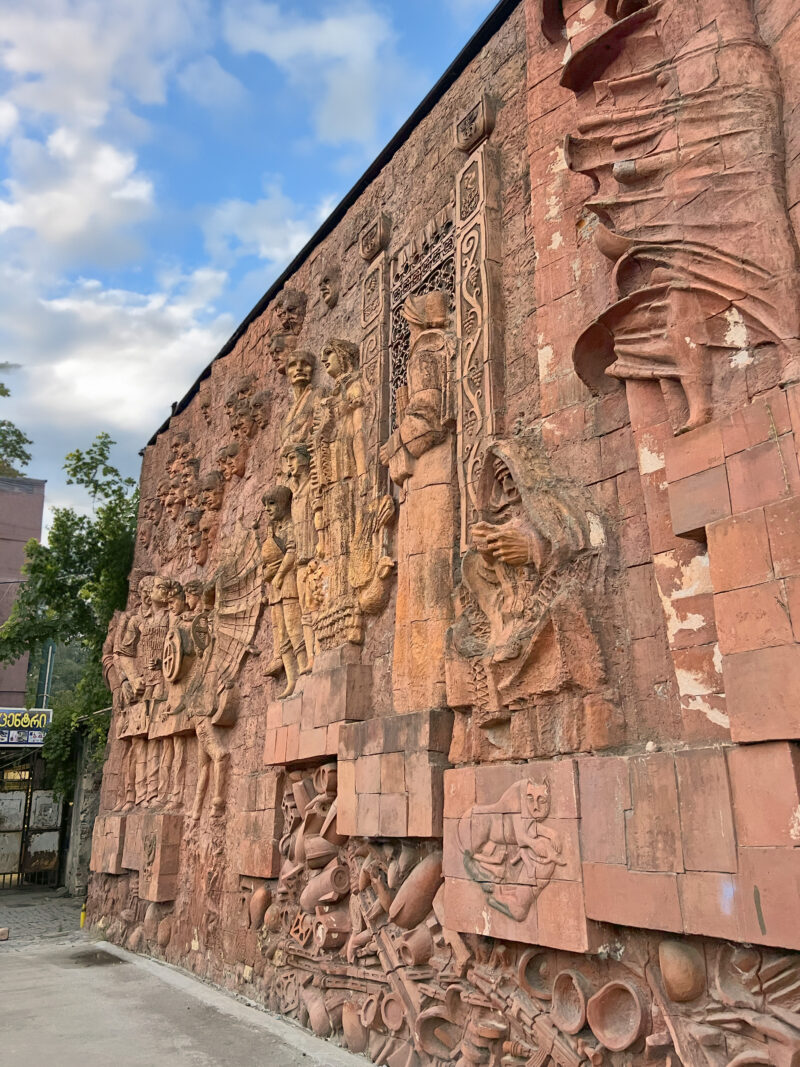
Why is the relief important?
The high-relief has been granted the status of a cultural heritage monument by the family of the artist, Bernard Nebieridze, on April 19, 2019. This status will protect the relief from demolition and reconstruction, and it is no longer allowed to carry out any construction or build temporary structures within a radius of 50 meters without permission.
Sveta Nebieridze, the wife of the artist, says the following 67 about its significance:
It is the same for Kutaisi as the pyramids for Egypt […] It is the mascot of Georgia. I am very happy. This should make the whole nation happy, not just me. No one knows how much work goes into it. There was talk of moving and demolishing it. Destroying it would be barbarism.
Documentary in Georgian
Stalin’s directive & a unique approach
The motif of this artwork is especially interesting when knowing about Stalin’s (1878–1953) central directive to directly merge the best features of the national identity of each member state with a Soviet culture that aspired to worldwide dominance. Originally a Georgian, Stalin attempted to allow the nations within the Soviet Union to develop their unique cultural features but within the confines of Soviet ideology 8 9.
Even though the post-Stalinist Soviet Union saw a relaxation of some of these regulations, with the absence of a single ‘official art directive’ and a general trend toward more artistic freedom, artists nonetheless faced constraints and censorship. Their work was still expected to conform to the overarching principles of socialism and promote Soviet patriotism and a sense of unity and loyalty to the Soviet state.
This relief, however, does not feature distinct Soviet symbols, ideals or narratives. Instead, it was primarily a tribute to the ancient heroes of Georgia, encapsulating the entire history of Georgia, specifically the legacy of Colchis, in vivid detail. Given the large scale and prominent location of the artwork, this was a rather unusual and perhaps defiant occurrence.
It is also unique in the sense that work on it started in the Soviet era but was completed and installed four years after the collapse of the USSR and Georgia’s declaration of independence in 1991. As of now, numerous Soviet-era artworks are in terrible condition, having been neglected for decades.
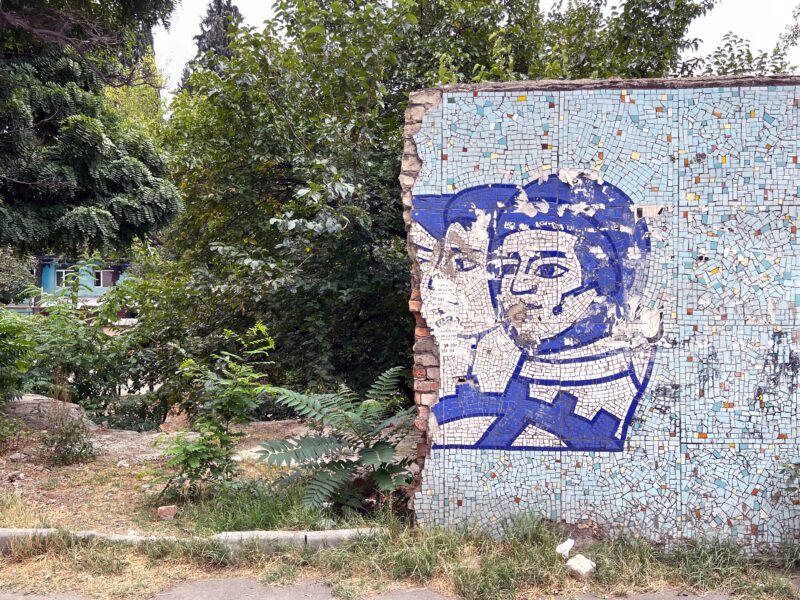
Only very few have been granted protection, and Nebieridze’s relief is an example of how preserving significant cultural heritage can bridge the gap between the past and the present, honoring the rich history of a region even in changing times. With its enormous size and location in public space 10, it’s an important representation of Soviet-era art 11.
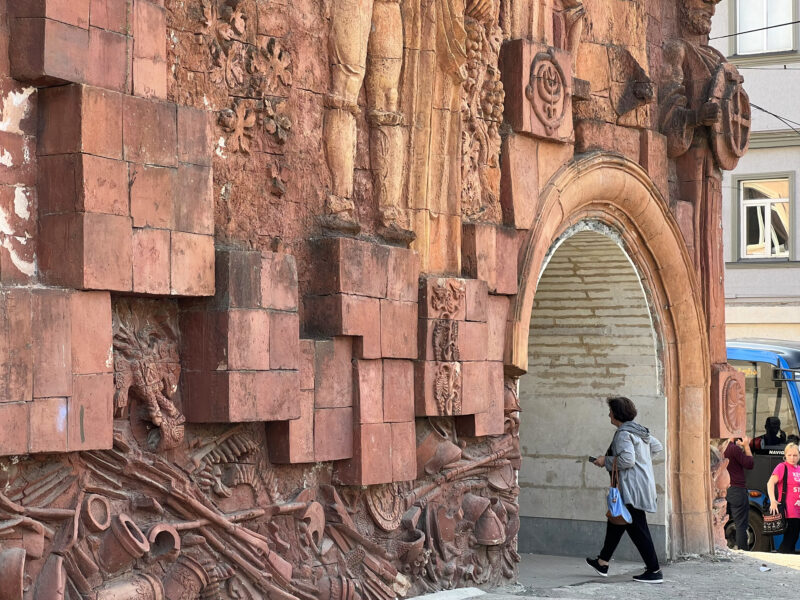
Where is the relief?
The Green Bazaar, also known as the Kolkheti Market, is located in the heart of Kutaisi and serves as the main supply center for the local population. The bazaar itself is made up of different elements of buildings and has undergone constant renovations over the years.
The halls from the Soviet era have been preserved. New hall areas have been added, some of which are two stories, while the older parts of the building have been merged to create larger, more modern shops similar to western supermarkets. The bazaar is now one of the largest covered markets in all of Georgia.
Why you should go
The Kolkheti relief is a must-see for visitors to Kutaisi, as it provides a unique insight into the city’s history and culture. Kutaisi was a crossroads for various cultures and civilizations throughout history and its location in western Georgia made it strategically important for trade and communication routes between Europe and Asia. The tales that emerged from Kutaisi have contributed to the enduring fascination with the ancient Kingdom of Colchis and its role in Greek mythology.
The central location of the artwork makes it easily accessible to visitors, which is why it is a popular destination for tourists and locals alike. It allows you to connect deeper with Colchi’s myths and tales, which have been retold and adapted in literature, art, and popular culture over the centuries. If you are keen to discover more, you will be delighted to know that you can spot more of Colchi’s motifs throughout Kutaisi.



